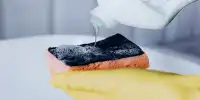A valley where rich people were rested with their most precious belongings, the tombs were intended to save them from the hands of explorers and so efforts to find the missing person in history are still failing archaeologists. The rigorous story of the search for Tutankhamun’s tomb paints a unique picture
of archaeologists trying to unravel the mysteries of the Egyptian king’s valley. After dragging the plots for excavation, Howard Carter and Lord Carnarvon searched only for King Ram’s resting place, only at the end of which its entrance was blocked by the tomb of Ramses VI.
The whereabouts of her missing have been traced for decades, and from one year to the next, the media reported that Queen Nefertiti was found “somewhere”, where she was sitting outside, probably capturing our gentleman, the still-not-yet-discovered Sarocfagus. Tutankhamun, Queen Nefertiti’s mother (or stepmother, researchers aren’t sure) is such an intensely sought-after Egyptian.
A popular theory for all-time Hyde and Sick champions is that he was kept in a secret room in Tutankhamun’s tomb, since its epoch-making discovery in 1922; the world has been very familiar with his later life property. A research paper entitled The Burial of Queen Nefertiti in 2015 Notable high-resolution images that were believed to reveal the location of the doors hidden inside the tomb. This theory was later supported by distinct lines observed on the ceiling of the tomb, leading researchers to believe that the “rooms” were in fact a corridor, sealed by a false wall. But as technological advances continue to change the way archeology is practiced, so does the suffix “hidden chamber”.
Theoretically, the idea of a hidden chamber inside the tomb is understandable, as Tutankhamun’s pad is unusually small for members of the royal family. The locations identified in Eldamati’s GPR investigation appear as pale blue areas on the radar, indicating a gap of a few meters to the east of Bedrock. The team is yet to confirm whether “space” is attached to Titenkhamun’s tomb chamber, but a 2m high (6.5ft), 10m long (32ft) gap is running at the same depth and parallel to
the tomb entrance corridor. Francesco Porcelli, a physicist at the Polytechnic University of Turin, Italy, led a similar GPR survey inside the tomb in 2017, concluding in a study published last
year in the Journal of Cultural Heritage that his findings actually ruled out any possibility of hiding the house inside the tomb.
Exciting to hear this, not everyone is a believer. Zahi House, another former Egyptian archeology minister, told Nature that using geotechnical techniques to search the tomb has never been discovered on any site in Egypt and that it only serves to raise false hopes. He is said to have dug an area north of Bal King’s tomb in search of an alternative entrance, but nothing was found.
Eldamati plans to return to the site to further study the northern part of the mausoleum chamber, but Tutankhamun’s resting place has become obscure again, with only the air-conditioning unit obscuring the time instead of the other burial. Without removing these, the team will fight for reading in the bedrock in this important area, but hopefully using a separate antenna and taking lessons together they can pin the size and location of the “hidden house” hopes a few centimeters.















